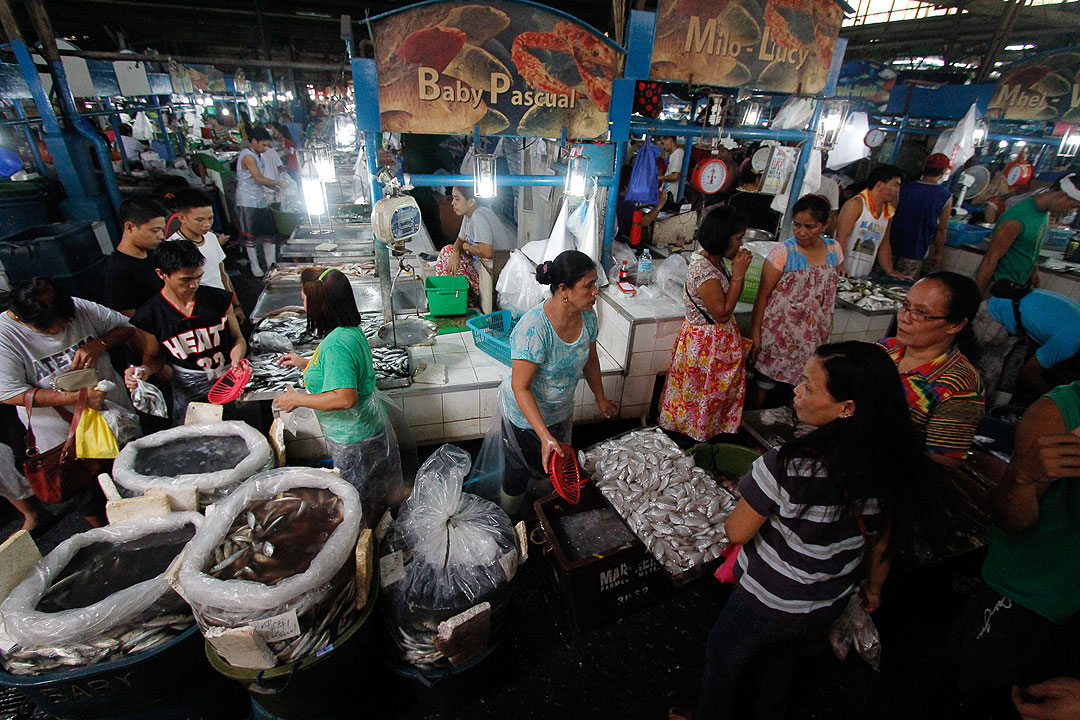




Philippines Trade Update: Exports momentum continues
 DOWNLOAD
DOWNLOAD

Quarterly Economic Growth Release: More BSP cuts to come
 DOWNLOAD
DOWNLOAD

Monthly Economic Update: Fed catches up
 DOWNLOAD
DOWNLOAD


Another rate hike may be needed to fight inflation

The Bangko Sentral ng Pilipinas (BSP) may be compelled to resume monetary tightening next month to mitigate inflationary pressures, although a likely pause by the US Federal Reserve could ease the pressure on the BSP to hike further, analysts said.
Jonathan L. Ravelas, senior adviser at Reyes Tacandong & Co., said there are more upside risks to inflation such as rising oil prices due to heightened geopolitical tensions in the Middle East.
“(We) may need more (rate) hikes to suppress inflation,” he said in a Viber message.
GlobalSource Partners Country Analyst Diwa C. Guinigundo said inflation’s upward trend may continue after the spike seen in August and September, as well as higher electricity rates, transport fares, and wages.
“On top of that, the latest forecasts of the BSP for the next two years are uncomfortably above the midpoint of the official (2-4%) inflation target, something that could upset inflation expectations,” he said in a Viber message.
“With the BSP’s suggestive forward guidance, it looks like the BSP is set to resume tightening monetary policy. To me, that is most appropriate,” he added.
BSP Governor Eli M. Remolona, Jr. earlier said he is not ruling out a 25-basis-point (bp) rate hike at its Nov. 16 meeting, after inflation accelerated for a second straight month in September to 6.1%.
September marked the 18th straight month that inflation exceeded the central bank’s 2-4% target. Year to date, inflation averaged 6.6%.
The BSP sees average inflation at 5.8% this year, before declining to 3.5% in 2024 and 3.4% in 2025.
Mr. Remolona has also hinted at the possibility of an off-cycle rate hike, but the BSP still needs to review the latest data before making a policy decision.
China Banking Corp. Chief Economist Domini S. Velasquez said they have raised their average inflation forecast to 5.9% for 2023, slightly higher than the BSP’s projection.
“We do think there is an increasing chance that BSP will hike its policy rate if the Fed hikes once more to keep interest rate differentials stable,” Ms. Velasquez said.
The US Federal Reserve’s next policy meeting is scheduled for Nov. 2. The Fed earlier signaled it would keep rates higher for longer, even as it kept the target Fed fund rate unchanged at 5.25-5.5% last month.
“However, we maintain our base scenario that there is less of a need to hike interest rates further given that the BSP has probably done enough with the cumulative rate hikes previously. Moreover, most of the recent shocks are supply side in nature,” Ms. Velasquez said.
The Monetary Board has kept the key interest rate unchanged at a near 16-year high of 6.25%. This was after hiking borrowing costs by 425 basis points from May 2022 to March 2023.
University of the Philippines Los Baños Senior Lecturer of Economics Enrico P. Villanueva said the BSP would consider a rate hike if the October inflation is considerably faster.
“The BSP is also conscious of growth impact and should consider lags in impact of previous rate hikes,” he said in a text message.
The statistics agency will release the October inflation data on Nov. 7, and the third-quarter GDP data on Nov. 9.
To mitigate the volatility in the foreign exchange market and manage dollar reserves more efficiently, Mr. Ravelas said the BSP can use advanced data analytics and artificial intelligence. This would help reduce currency risks and stabilize exchange rates.
At a press briefing on Friday, Richard Yorke, head of global corporate and investment banking for Asia Pacific at MUFG Bank, said it may be the end of the tightening cycle in the United States.
“We are waiting for the light at the end of the tunnel in terms of how far interest rates will rise. It looks like we’re getting to the end of the rising cycle. So, we are seeing a slow pick up in terms of confidence (from our clients) in making (investment) decisions,” he said.
However, Marie Diana Lynn Coronel-Singson, deputy country head at MUFG in Manila, said growth and inflation remain major concerns in the Philippines.
“Historically, the BSP has somehow followed more or less how the Fed moves. But the BSP will have to look at a lot of factors in the Philippines,” she said.
But despite a tighter interest rate environment, the MUFG executives said they still see strong economic growth in the Philippines amid new investment initiatives and business opportunities in the country.
Mr. Guinigundo said that resuming monetary tightening could compromise economic growth.
“Monetary policy can manage demand pressure which remains strong as the economy continues to grow. This is indicated by the elevated reading on core inflation,” he said.
Core inflation, which excludes volatile prices of food and fuel, further eased to 5.9% year on year in September, lower than 6.1% seen in August. Year to date, core inflation averaged 7.2%.
Meanwhile, the Philippine economy grew by 4.3% in the second quarter, much weaker than 6.4% in the first quarter and 7.5% in the second quarter a year ago.
In the first half, GDP growth averaged 5.3%, still below the government’s 6-7% target for 2023. — By Keisha B. Ta-asan, Reporter
This article originally appeared on bworldonline.com





 By BusinessWorld
By BusinessWorld